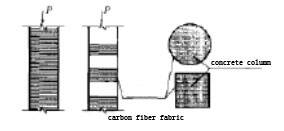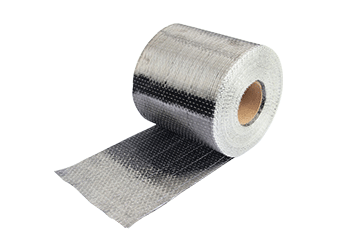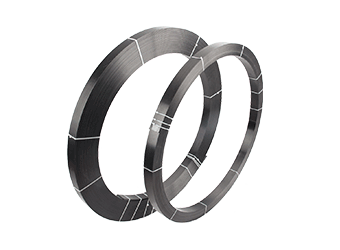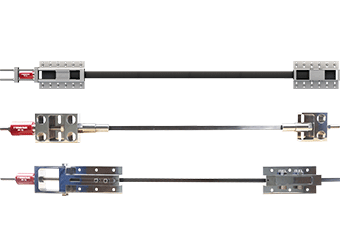Soluciones
La gama de negocios de construcción de caballos se extiende a todo el mundo y sirve a miles de clientes con productos, orientación técnica especializada en construcción, y somos testigos del reinicio de la marca china con ellos.
CFRP fabric to bridge reinforcement is mainly embodied in the following aspects: the reinforcement of bending moment and normal section bearing capacity of shear members; the reinforcement of oblique section bearing capacity; the reinforcement of shear section; the reinforcement of compressive members and so on.
The application scope of CFRP fabric to bridge reinforcement is mainly embodied in the following aspects: the reinforcement of bending moment and normal section bearing capacity of shear members; the reinforcement of oblique section bearing capacity; the reinforcement of shear section; the reinforcement of compressive members and so on.
1 strengthening of normal section bearing capacity
When strengthening the normal section bearing capacity with carbon fiber fabric, it is advisable to adopt the sticking method as shown in the following figure.

One or more layers of carbon fiber fabric can be bonded to the bottom of the bridge according to the degree of damage. The number of layers can be calculated according to the normal section bearing capacity of the Principle of Concrete Structure Design. The shape of carbon fiber fabric should be U-shaped wrap, because it can maximize the bearing capacity of normal section.
2 oblique section bending and section shear strengthening
When the inclined section is strengthened or the shear strength of the section is improved, the following pasting method can be adopted:

In order to ensure the maximum tensile performance of carbon fiber fabric, the direction of adhesion should be generally consistent with the principal tensile stress trace in the beam. The number of layers can be calculated synthetically according to the Principle of Concrete Structure Design and the flexural and shear resistance of steel bars.
3 reinforcement of compression members
When CFRP fabric is used to reinforce columns under compression, the following strengthening methods can be adopted:

For reinforced concrete members, the role of carbon fiber fabric is equivalent to the reinforcement in concrete columns. Therefore, the number of CFRP fabric layers can also be calculated according to the "Design Principles of Concrete Structures". For column reinforcement, not only can all be pasted wrapped, but also can be partially pasted wrapped. Practice has proved that the effect of strengthening with partially wrapped is more obvious than that of all wrapped. The column strengthened by this method can not only improve the bearing capacity of the column, but also improve the ductility of the column. The advantages of this technology in earthquake-prone areas are more obvious.
Key points of carbon fiber fabric reinforcement construction technology
1) Do a good job of preparation before the construction, before the construction of the building to be strengthened by research, analysis and calculation, such as the number of strengthened layers, the characteristics of components, equipped with appropriate equipment to ensure the smooth progress of construction;
2) make necessary treatment to reinforce the location to ensure the effect of reinforcement. For example, the concrete parts are polished and polished. Under the humid construction environment, the reinforced parts are dried to remove the surface dust.
3) When pasting CFRP, do not forget to brush the underlying resin, which can effectively make CFRP and concrete components bond closely, brush resin should be uniform and sufficient bonding strength, so that they work together to strengthen the component. The bottom resin should be uniform and comprehensive.
4) When pasting CFRP, special pasting tools are used. In order to prevent bubbles from affecting the pasting effect, soaking resin can be used to smoothen and extrude bubbles. If you need to paste multilayer carbon fiber cloth, repeat the above operation, and finally cover the polyacetate film.
5) Carbon fiber cloth after pasting the surface of appropriate treatment, after resin solidification, can be coated on the surface of carbon fiber cloth fire retardant paint or sunscreen paint, enhance adhesion durability, prevent resin aging off.
General methods for strengthening bridge structures with carbon fiber rods
Because of its own characteristics, the reinforcement of CFRP is mainly embodied in the following aspects: the reinforcement of the normal section bearing capacity of flexural members, the reinforcement of the cross-section shear capacity, and the reinforcement of the oblique section bearing capacity.
1 strengthening of normal section bearing capacity
There are many ways to reinforce members with CFRP bars. When strengthening the normal section bearing capacity of members, we should adopt the method of planting steel bars. When the bending capacity of the normal section can not meet the needs, we should first deal with it before reinforcement.
2 oblique section bending and section shear strengthening.
The inclined section bending and shear strengthening of CFRP bars are usually carried out by planting steel bars. On the side surface of the beam and where the principal tensile stress trace in the beam body is consistent, a groove is cut out, carbon fiber rods are placed, and then sealed with epoxy resin concrete.
conclusion
Using carbon fiber to reinforce buildings, whether carbon fiber fabric, carbon fiber strip or carbon fiber bars have very significant characteristics and advantages, compared with other reinforcement methods is a new technology worthy of wide application.
Puede encontrar cualquier cosa que necesite, confíe en probar estos productos y encontrará la gran diferencia después de eso.

Tejido de fibra de carbono unidireccional de alta resistencia para refuerzo de compuesto de polímero reforzado con fibra (FRP).

Lámina de fibra de carbono pultruída para reforzamiento de estructuras

Placa / laminado / banda de polímero pretensado reforzado con fibra de carbono (CFRP) para la losa, refuerzo del haz